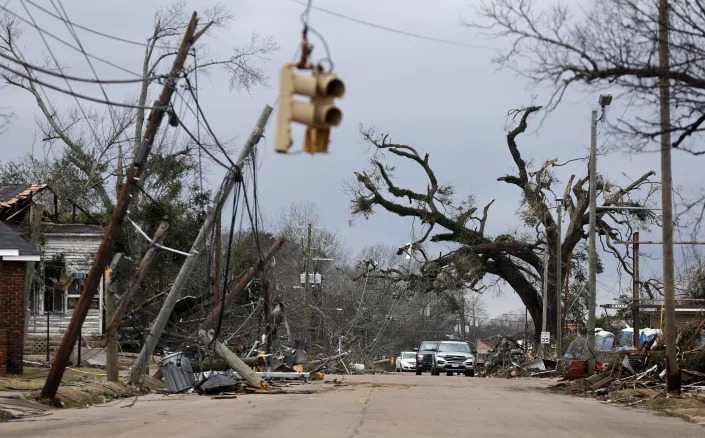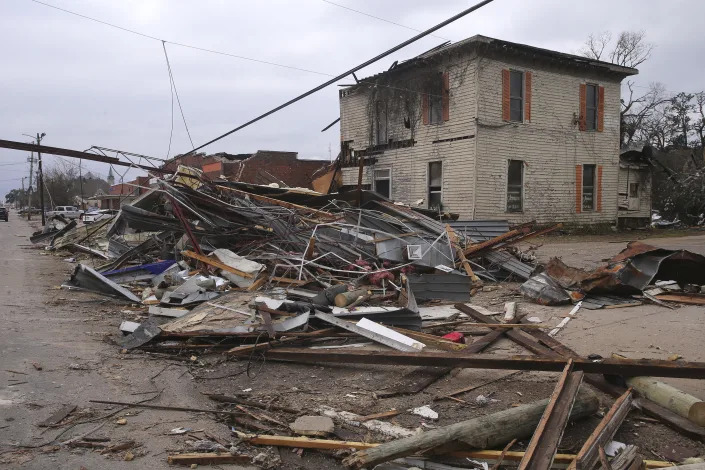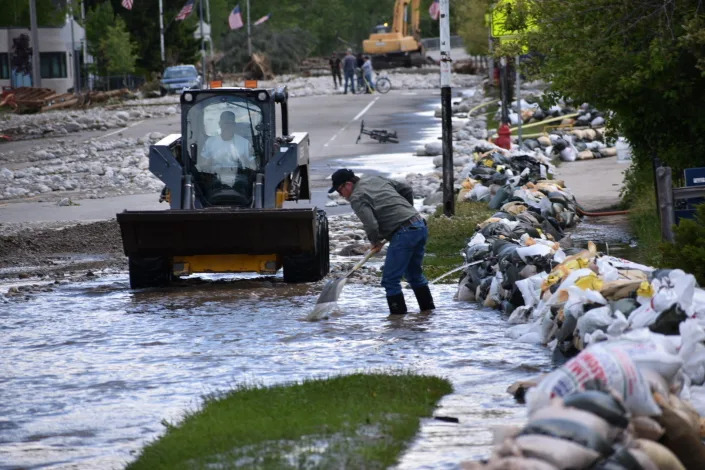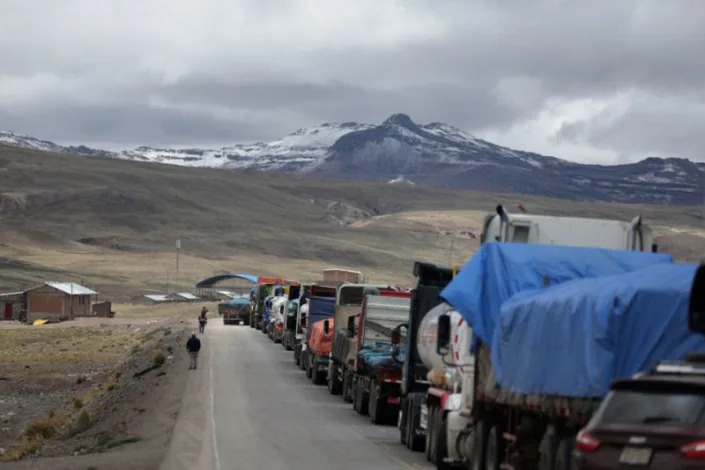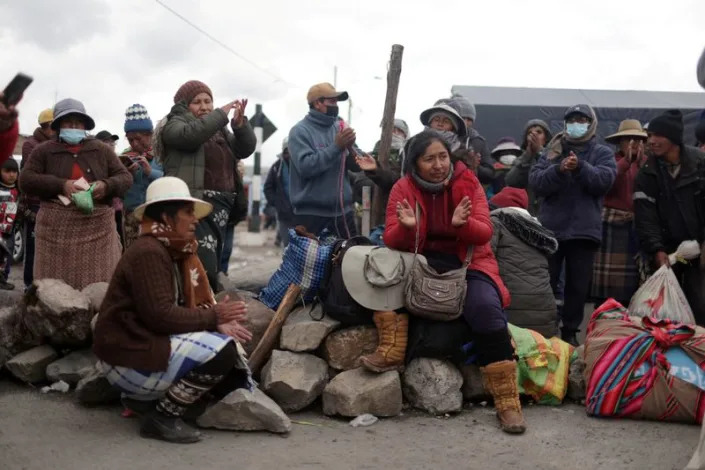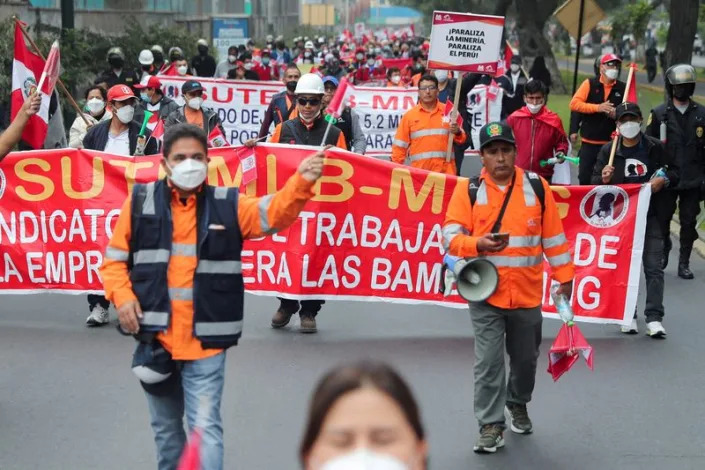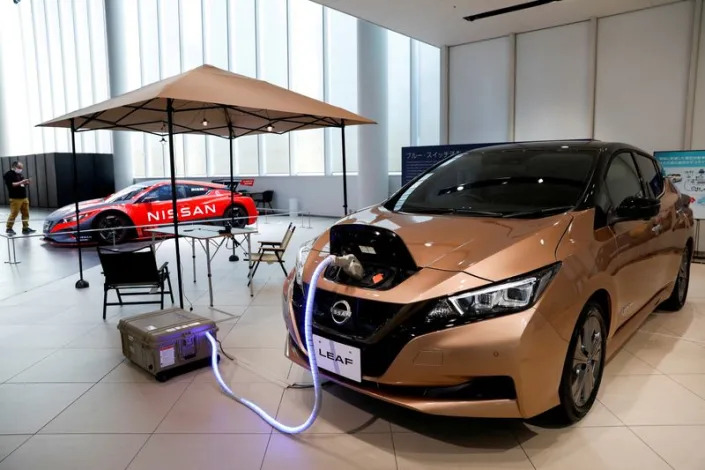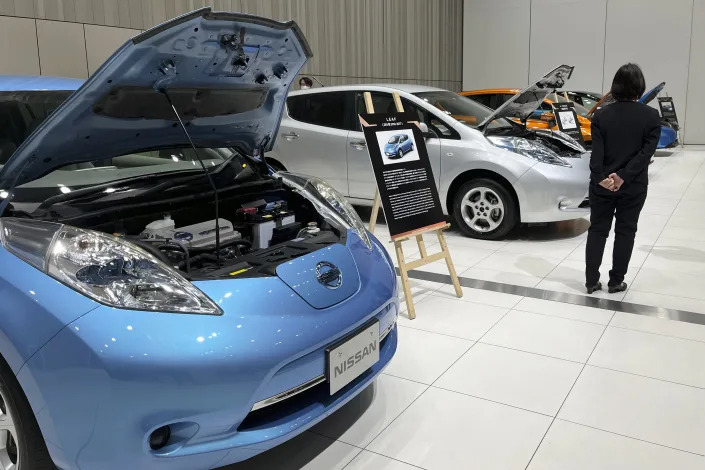
Rep. Shanda Yates, I-Jackson, gestures as she outlines the proposed jurisdiction of the Capitol Police within the city of Jackson, during floor debate on the bill, Wednesday, March 8, 2023, at the Mississippi Capitol in Jackson

Jackson Mayor Chokwe Antar Lumumba, left, listens during a hearing hosted by the Jackson delegation of the Mississippi Legislature at the state Capitol in Jackson on Monday, March 6, 2023. The hearing was in opposition to a bill that would create courts with elected rather than appointed judges and expand the jurisdiction of the state-run Capitol Police department inside the city of Jackson
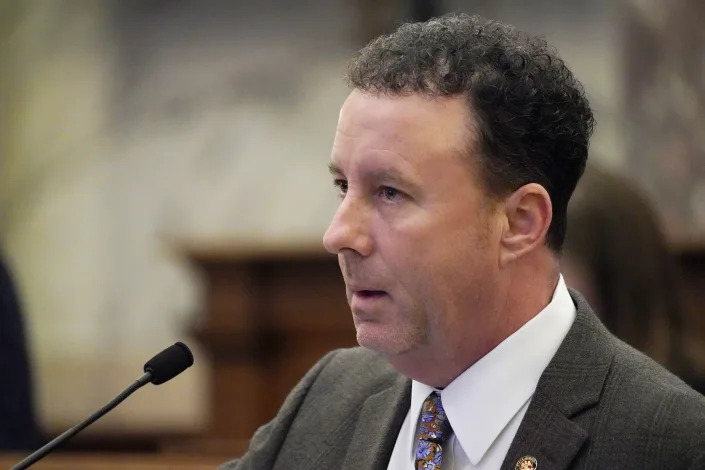
Sen. David Parker, R-Olive Branch, speaks at the Mississippi Capitol in Jackson, on Tuesday, March 7, 2023, about a bill that would set new rules for removing names from voter rolls.
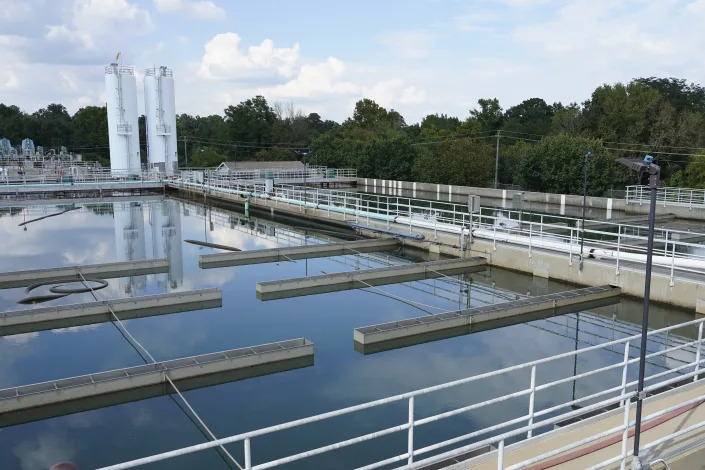
Clouds are reflected off the City of Jackson's O.B. Curtis Water Treatment Facility's sedimentation basins in Ridgeland, Miss., Sept. 2, 2022. As the most populous city in Mississippi attempts to improve its troubled water system, it has appointed a new interim director to lead the agency that runs local infrastructure.

Black City White Legislature
Rep. Shanda Yates, I-Jackson, left, listens a Rep. Ed Blackmon Jr., D-Canton, argues against proposed legislation outlining the jurisdiction of the Capitol Police within the city of Jackson, Wednesday, March 8, 2023, at the Mississippi Capitol in Jackson.
EMILY WAGSTER PETTUS
Thu, March 9, 2023
JACKSON, Miss. (AP) — Mississippi lawmakers are giving up on an effort to create a state-dominated board to oversee the troubled water system in the state's capital city.
But, the Republican-controlled state Legislature is still considering proposals to appoint rather than elect some judges and to expand the territory of a state-run police department inside Jackson, which is governed by Democrats.
Mayor Chokwe Antar Lumumba has sharply criticized white lawmakers' attempts to assert state control in Jackson, which has the highest percentage of Black residents of any major U.S. city.
The Jackson water system has been struggling for years and nearly collapsed in August and September, leaving most people in the city of 150,000 without running water to drink, bathe, wash dishes or flush toilets. Parts of the city lost water again during a cold snap in December.
In November, the federal government appointed Ted Henifin, an experienced administrator from Virginia, to oversee Jackson's water system. The federal government also has allocated hundreds of millions of dollars for Jackson water improvements.
The Mississippi Senate voted last month to create a nine-member regional utility board to control Jackson water after Henifin finishes his work, with four members who would be appointed by the mayor and five by state officials.
Wednesday was the deadline for the Mississippi House to consider the Senate bill, and House leaders let it die without bringing it up for a vote.
“There was ‘Jackson fatigue’ among the membership," independent Rep. Shanda Yates, of Jackson, said Thursday.
Yates said House leaders want to focus instead on proposals to curb crime in Jackson, which has had more than 100 homicides for each of the past three years.
Republican Sen. David Parker of Olive Branch sponsored the bill to create a regional utility board, saying he believes Jackson's water woes are hurting the whole state.
“I’m disappointed that we didn’t get any action on that bill," Parker said Thursday. “It’s a significant problem, and it’s a problem that deserves attention now.”
The Mississippi House and Senate have passed different versions of bills to expand the territory for Capitol Police. The state-run department currently patrols in and near downtown Jackson, where state government buildings are located. The city-run Jackson Police Department patrols the entire city.
Yates, who is white, said during a House debate Wednesday that she knows Jackson residents who are considering moving out of the city because they don't feel safe.
“We have a crime problem,” Yates said.
Democratic Rep. Ed Blackmon of Canton is one of several Black lawmakers opposing the expansion of Capitol Police territory. Blackmon said African Americans want to be protected from crime, but many worry the state police won't be held accountable if they treat people roughly.
“There will be no joy in the Black community when this becomes law,” Blackmon said Wednesday.
____
Associated Press/Report For America reporter Michael Goldberg contributed to this report.
(AP Photo/Rogelio V. Solis)


